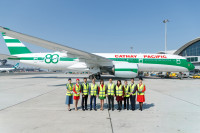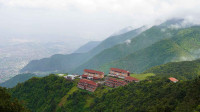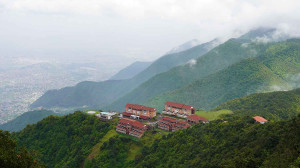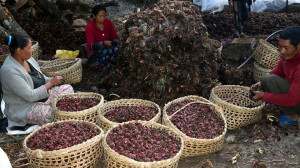Money
Trade disruption at Rasuwagadhi forces container diversion to Tatopani
Flood damage at Rasuwagadhi leads traders to reroute goods through the risky Tatopani corridor, raising fears of supply disruption ahead of Nepal’s biggest festivals.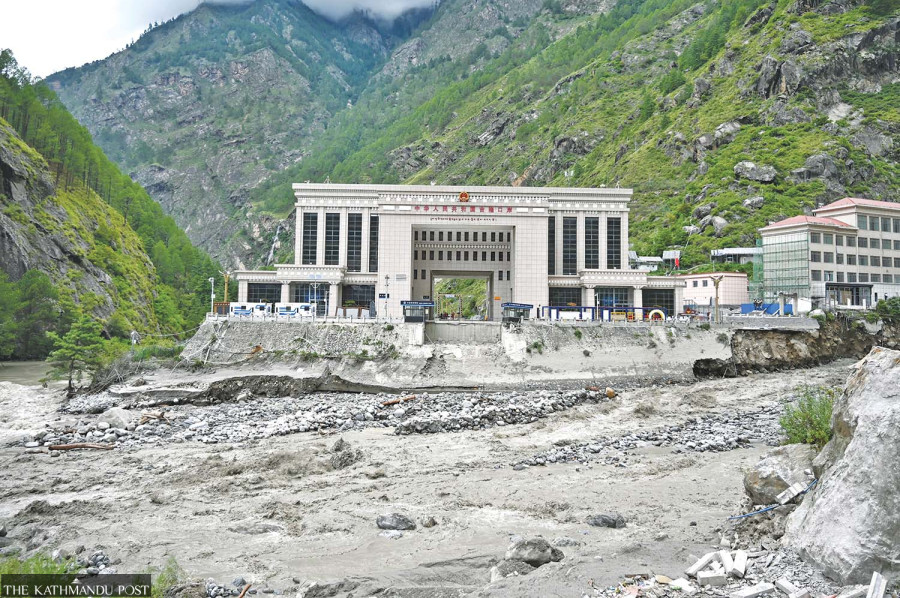
Post Report
Traders began diverting cargo containers stranded at the Rasuwagadhi-Kerung border to the Khasa-Tatopani border point starting Thursday.
The move comes as uncertainty looms over reopening the Kerung-Rasuwagadhi trade route, damaged by flash floods on July 8. The alternative route, however, is fraught with risks due to continued monsoon-triggered landslides and floods.
Following the flood, the Rasuwagadhi customs office has remained shut, and officials say there is no clarity on when trade might resume from that route. Traders fear the disruptions could severely affect the import of goods targeting the upcoming festive season, especially Dashain that is just two months away.
According to the Rasuwa Customs Office, about 500 cargo containers enter Nepal monthly through the Kerung border, while approximately 60 containers with exportable goods head to China. The route had emerged as a vital conduit for bilateral trade, especially for Chinese consumer goods and electric vehicles (EVs), which have recently gained popularity in Nepal.
In the fiscal year ended July 16, Nepal imported around 9,000 electric vehicles via the Kerung border alone. These included passenger vehicle brands like BYD, MG, Skyworth, Jaguar, and KYC, as well as commercial models like King Long. However, the flood damage to the Rasuwagadhi dry port, a key trade infrastructure under construction, has further deepened the crisis.
“Around 500 containers carrying festival-targeted goods are currently stuck at Kerung. We started diverting them to the Tatopani border from Thursday. Still, we are not sure if that route can handle such pressure,” said Ram Hari Karki, president of the Nepal Trans Himalayan Border Commerce Association.
Tatopani, once the primary trade route with China, had faced years of disruption after the 2015 earthquake and has remained unstable due to seasonal landslides and infrastructure limitations. The road from Khasa to Tatopani is also prone to blockages, especially during the monsoon.
“The rainy season has made traders sceptical. The Tatopani border area itself is highly vulnerable to floods and landslides. Some traders have even started diverting their Chinese imports via ships through Kolkata port in India,” Karki said.
However, sea shipments pose their challenges, particularly concerning time. “It takes 40 to 50 days for goods to arrive via sea, and with Dashain just two months away, traders don’t want to take chances. Many are risking using the Tatopani route despite the threat of monsoon,” he added.
The flood that hit Rasuwagadhi on July 8 completely swept away the Nepal-China Friendship Bridge (Miteri Bridge), halting trade and cross-border movement. A temporary bridge is needed to resume even partial operations, but neither the Chinese nor the Nepali side has committed to constructing one.
“The flood has completely damaged the under-construction dry port at Rasuwagadhi, which was about 80 percent complete and funded by a Chinese government grant of around Rs3 billion,” said Rabindra Prasad Pyakurel, information officer at the Rasuwa Customs Office.
According to him, around 25 containers parked at the dry port have gone missing, and about 90 newly imported electric vehicles were swept away or severely damaged. Most EVs were imported by the Chaudhary Group and included high-end models such as Skywell.
“The full damage report has not been finalised yet, but we know the destruction is extensive,” Pyakurel said.
He added that a Bailey bridge could offer a temporary solution to resume trade, but the lack of direct communication with Chinese authorities has left Nepali officials in the dark. “Without coordination from the Chinese side, we have no idea when or how trade will resume,” he said.
The Rasuwagadhi-Kerung route was officially opened in December 2014 and was upgraded to an international checkpoint in 2017, enabling cross-border travel with passports and visas. It has since become Nepal’s second-largest trade gateway with China after Tatopani, handling significant imports and exports.
According to the Department of Customs, Nepal imported goods worth Rs298.77 billion from China in the fiscal year 2023–24, while exports to China were worth just Rs2.58 billion, leading to a massive trade deficit of Rs296.18 billion.
Chinese goods—especially garments, footwear, mobile phones, and electronics—are highly popular among Nepali consumers, particularly during the festive season. With Dashain and Tihar approaching, disruptions at the northern border could lead to shortages and a rise in consumer prices.
“The situation is serious,” said Karki. “If we cannot ensure a smooth supply chain soon, the market will be impacted. Consumers may have to pay more, and some products might not arrive in time.”
While trade through India remains steady, Chinese imports hold a unique space in Nepal’s consumer market. The continued disruption at Rasuwagadhi, combined with fragile infrastructure at Tatopani and delays in sea shipments, has placed traders in a tight spot.
For now, all eyes are on the government—both in Kathmandu and Beijing—to intervene and establish a temporary fix to resume cross-border trade before Nepal’s major festivals begin.




 13.05°C Kathmandu
13.05°C Kathmandu

